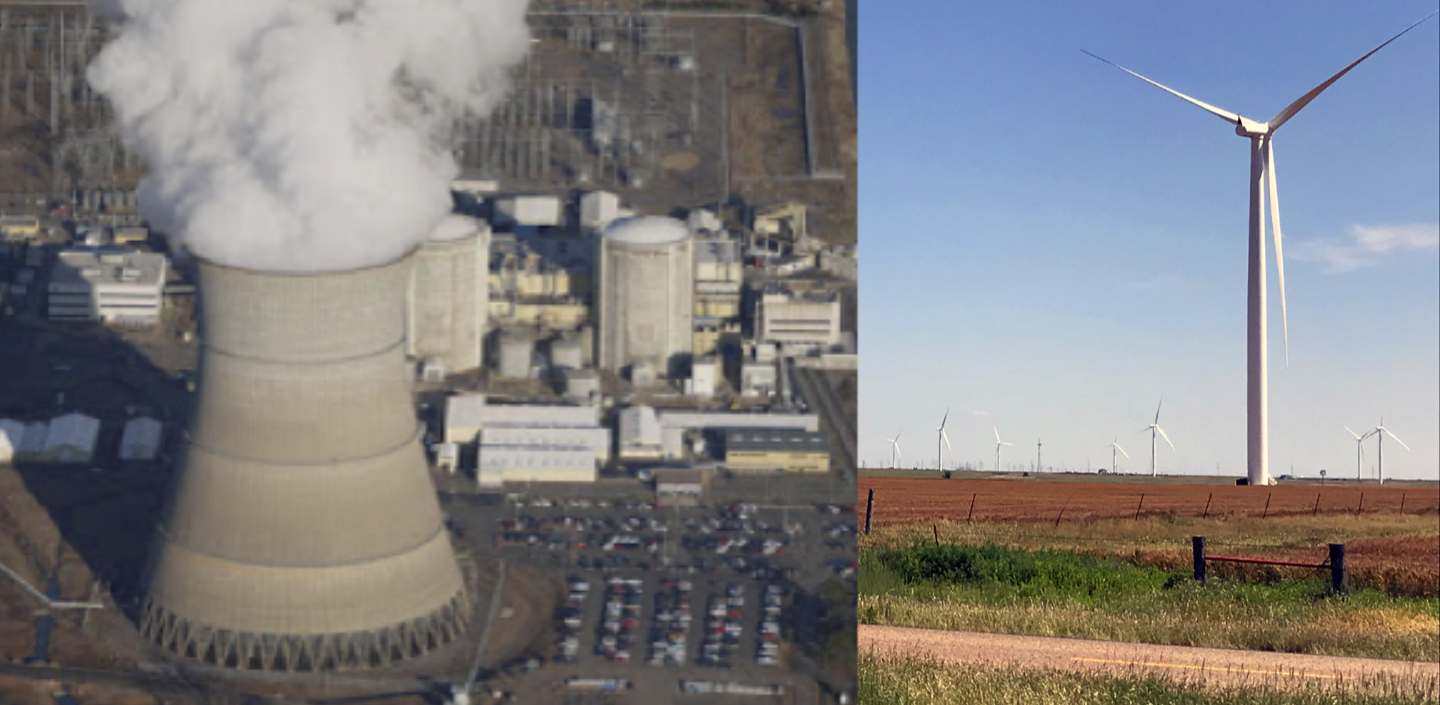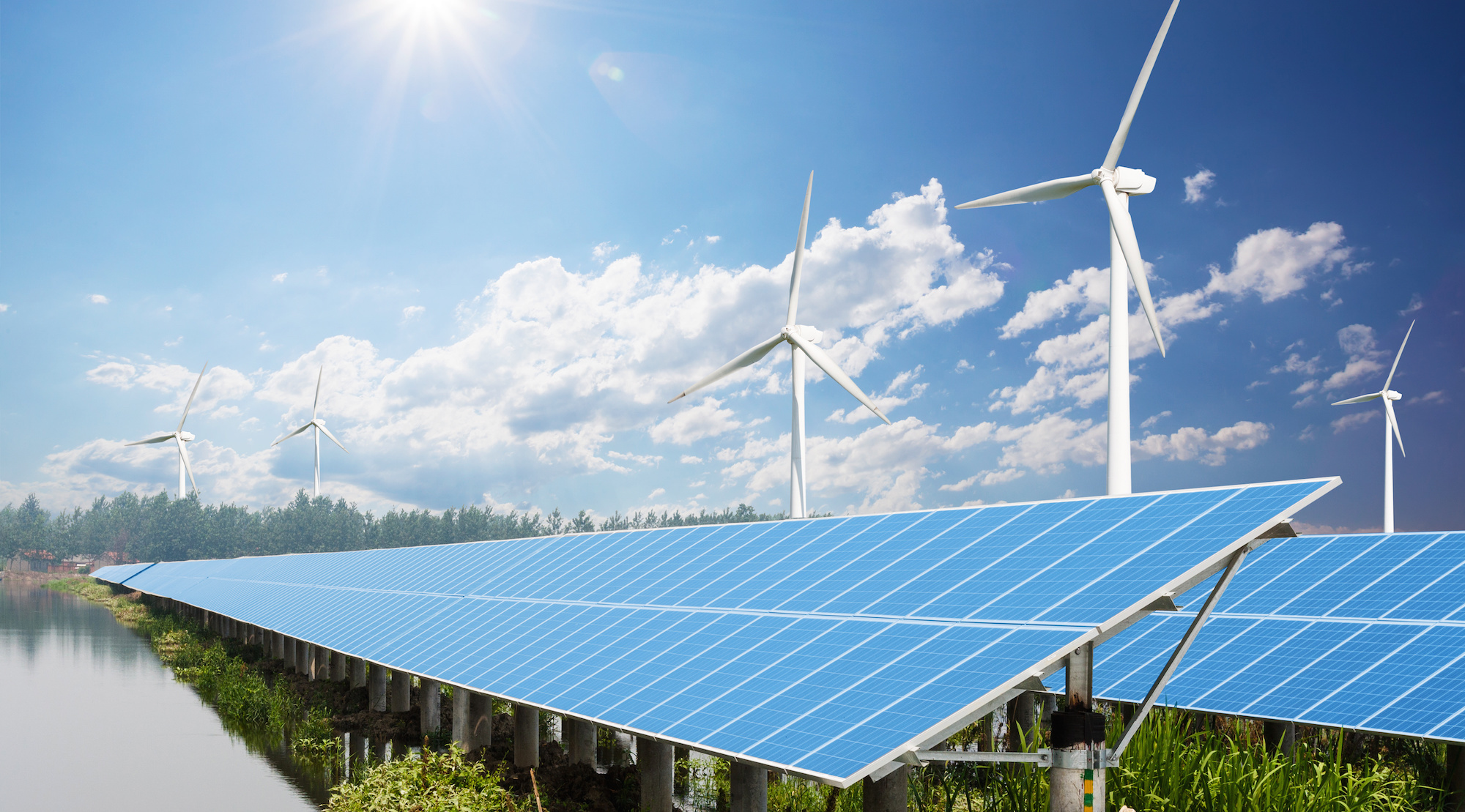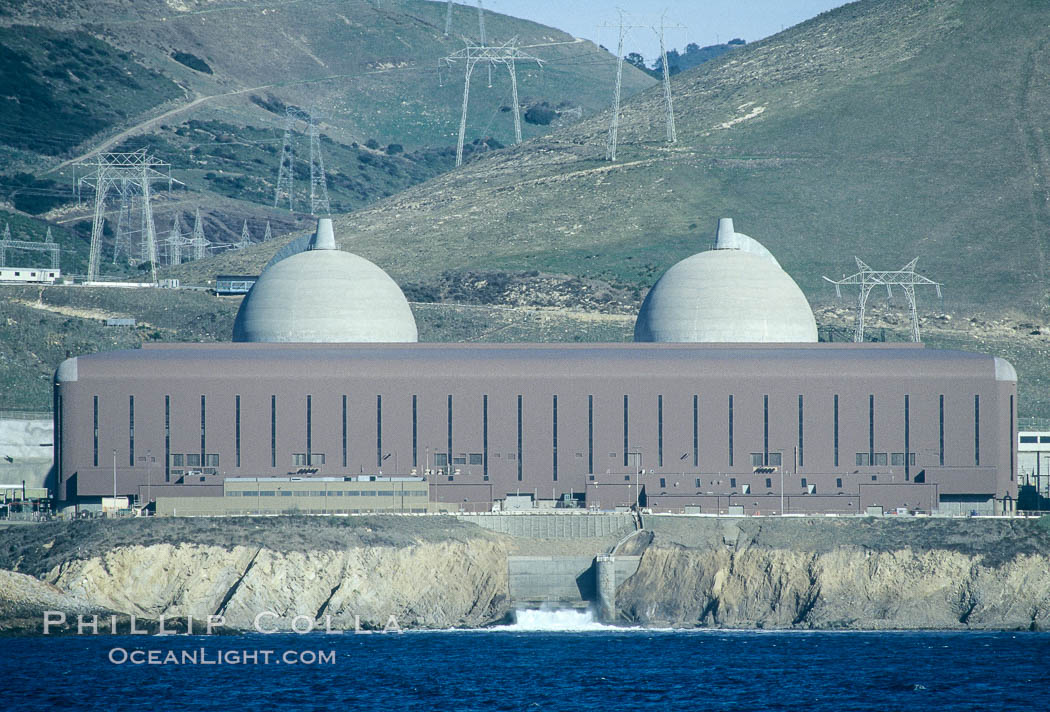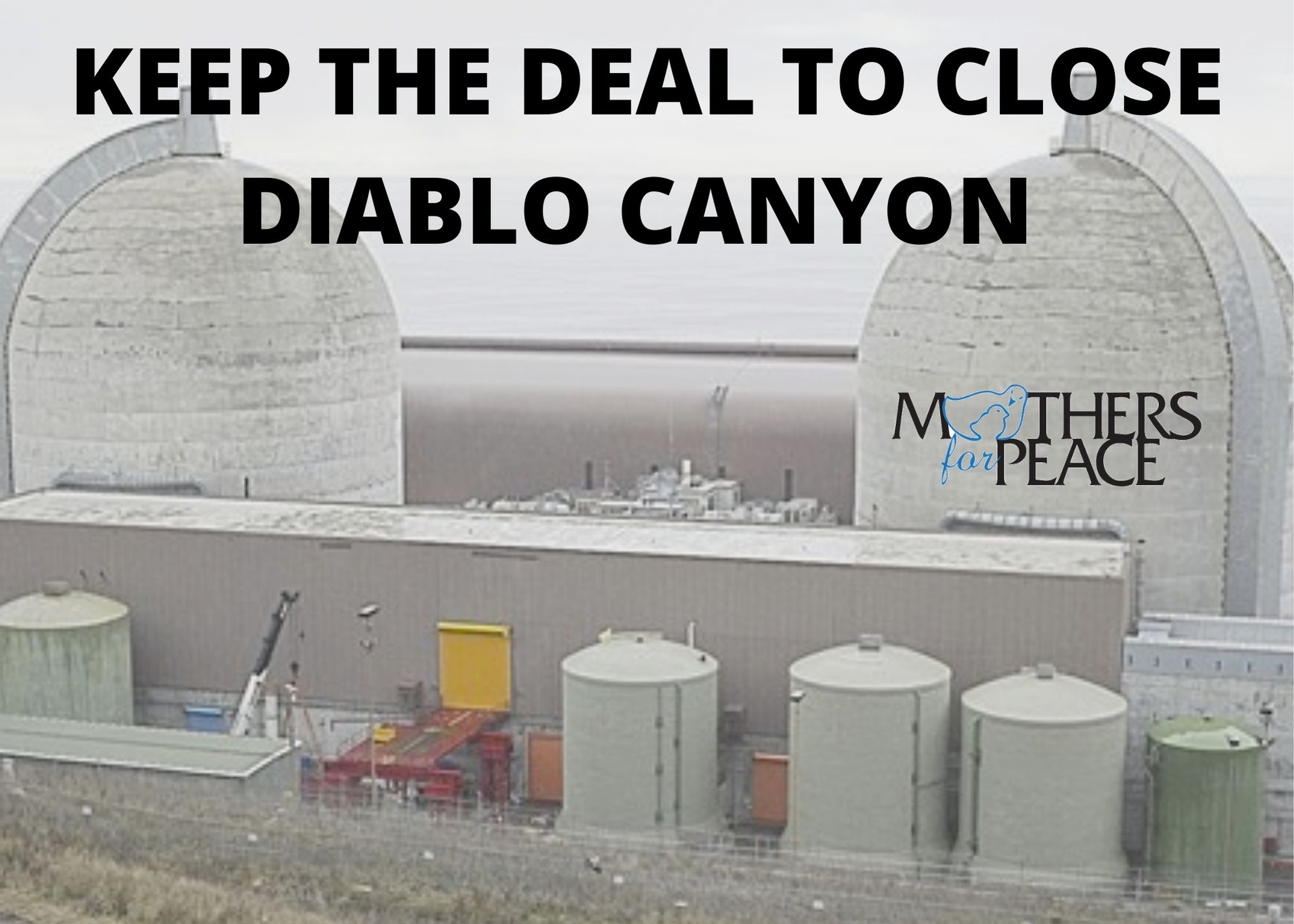
At COP26, Kerry calls for tripling the world’s nuclear reactors;
US Joins Declaration to Triple Nuclear Energy
Capacity by 2050 to Support Climate Goals
US Department of State
DUBAI (December 2, 2023) — Today, US Special Presidential Envoy for Climate John Kerry joined leaders and ministers from four continents to announce the Declaration to Triple Nuclear Energy at the UN Climate Change Conference in Dubai, United Arab Emirates (COP28). The Declaration recognizes the key role of nuclear energy in achieving global net-zero greenhouse gas emissions by 2050 and keeping the 1.5-degree Celsius goal within reach.
The Declaration also highlights the need for secure supply chains and encourages shareholders of the World Bank, international financial institutions, and regional development banks to include nuclear energy in their lending policies. Endorsing countries include Bulgaria, Canada, Czech Republic, Finland, France, Ghana, Hungary, Japan, Moldova, Mongolia, Morocco, The Netherlands, Poland, Republic of Korea, Romania, Slovakia, Slovenia, Sweden, Ukraine, United Arab Emirates, United Kingdom, and the United States.

PG&E says it won’t test its Diablo Canyon reactor for saftey as planned.
War Against Renewables Takes Terrifying Turn
In Newsom’s Nuke-Powered California
Harvey Wasserman / Truthout
(October 26, 2023) — The nuclear industry’s war against renewable energy has taken center stage in California under Democratic Gov. Gavin Newsom, with a terrifying new development now threatening the state and nation with increased risk of intense radioactive fallout.
This week on October 24 — despite earlier assurances — Pacific Gas and Electric (PG&E) revealed that it will not test its 38-year-old atomic reactor in California’s Diablo Canyon for embrittlement during the current refueling outage, but instead plans to wait until the next outage in 2025 before conducting the crucial safety tests.
Embrittlement transforms a metallic reactor pressure vessel (RPV) as heat, pressure and radiation rob it of resilience. An embrittled reactor pressure vessel can shatterwhen coolant water is poured in during an emergency, causing massive steam, hydrogen and fission explosions.
If this occurred at Diablo Canyon, resulting radioactive clouds could blanket the state and nation with killing powers far surpassing Chernobyl and Fukushima.
The reactor in Diablo Canyon showed dangerous embrittlement during the last inspections of it, which took place between 2003 and 2005, and it has not been tested since. PG&E now wants the 38-year-old atomic reactor, which is known as Unit One, to operate years longer without examining this core safety feature, arguing that it is not able to remove a component needed for testing until 2025.
This terrifying decision epitomizes the all-out war occurring between nuclear power and renewable energy in California.
On the grid, against rooftop solar panels, in batteries in basements, at the marketplace and regulatory agencies, in the banks and the legislatures – the zero-sum confrontation between green power and the “Peaceful Atom” stands to define the human future.
It begins on the wires.

Costly, aging reactors are out-performed by cheap, efficient green power.
Since 1985, the two big light-water reactors at the state’s last remaining nuclear power plant, Diablo Canyon, have regularly poured more than a thousand megawatts each of “baseload energy” into the grid.
But the value of that energy has been upended by a spectacular influx of renewable green power. With nearly 1.8 million rooftop installations, California now gets far more juice from solar panels — more than a quarter of the state’s electricity — than from Diablo.
Green power also now flows from wind turbines, geothermal, and other green providers.
Advanced efficiency technologies such as LED lighting have also reshaped the demand curve. And tens of thousands of industrial-scale battery arrays at least twice saved the state from blackouts. Thousands of smaller unitsinstalled in homes, offices and factories stand ready to do the same.
Overall, batteries have now become such a dependable, fast-growing piece of the energy supply that a Vermont utility is proposing to install them in their customers’ basements rather than extending new power lines. In a state whose single atomic reactor has recently shut, the battery-based system will be cheaper and more reliable than depending on power wired in from distant generators.
Likewise, Diablo’s inflexible feed has become an unsustainable dinosaur. Atomic reactors are neither cheap nor easy to manipulate. They function primarily in a straight-line paradigm (except when refueling or being repaired) with the same high-priced power flowing into the grid in a steady stream.

By contrast, decentralized renewables like solar and wind are quick to ramp up or down. With batteries now in millions of basements, inflexible baseboard power becomes a burden, clogging up the grid when cheaper, quicker-to-deploy renewables could flow to meet peak demands while scaling back at times of lower usage. In essence, Diablo’s power has become the electric equivalent of a debilitating blood clot.
Ironically, earlier this year a forced slowdown hit Finland’s new Olkiluoto reactor. Opened in May, after long delays and huge cost overruns, Olkiluoto had to slow down production within weeks to clear the grid for a massive influx of far cheaper wind and hydro power.
Partly due to this extremely expensive market disconnect, Pacific Gas and Electric in 2016 agreed to phase out the two Diablo reactors in 2024 and 2025, when their Nuclear Regulatory Commission (NRC) operating licenses would expire as they reached 39 and 40 years old respectively. Facing a wide range of additional repairs and regulatory mandates, PG&E joined with then-Gov. Jerry Brown to chart orderly shutdowns in sync with the transition toward a renewable-based grid.
After months of tense high-level negotiations, the agreement was also signed by then-Lieutenant Gov. Gavin Newsom, the state legislature and key regulatory agencies, local governments, major labor unions, environmental groups, and others. The landmark agreement included union-endorsed compensation and retraining for the plant’s labor force, environmental concessions, tax subsidies for local governments, and more. As a whole, it created a crucial template for phasing out old atomic reactors amidst the global tsunami of new renewables.
The 2016 deal was also posited on an assumed influx of wind, solar, geothermal, and other green supplies in tandem with more battery backups and increased efficiency. Twice in the transition period those batteries have prevented system-wide blackouts.

Newsom also made a high-level public plea for consumers to cut back on peak demand when it was poised to exceed supply. Californians responded en masse. No blackouts occurred. Overall, the green additions to the statewide grid meant to compensate for Diablo’s departure have far exceeded what the 2016 plan deemed necessary.
But in 2022, Newsom suddenly trashed the shutdown deal he’d signed six years before. Warning of potential shortfalls during very narrow theoretical windows of potential peak demand, he strong-armed the legislature and the Public Utilities Commission (CPUC) into a bailout plan with more than $1.4 billion in state funds for PG&E to keep Diablo running, along with another $1.1 billion from the federal government.
The move has shocked and infuriated the state’s anti-nuclear and renewable energy movement. Its extremely complicated ramifications are now being challenged throughout the regulatory and court systems.

The Mothers for Peace has taken the NRC to federal court, arguing that PG&E’s relicensing plans fall short of the agency’s own long-standing requirements.
In league with Friends of the Earth, Mothers for Peace has also filed a petition with the NRC to warn that the elderly Unit One of the Diablo plant is deeply — possibly fatally — embrittled.
Embrittlement occurs as a reactor pressure vessel is subjected to extreme heat, pressure and radiation over decades of operation. In response, the RPV’s metals lose their resiliency. In an emergency situation, with a rapid influx of cold water, the RPV could shatter, leading to steam, hydrogen and radiation explosions involving massive releases of apocalyptic fallout.
Among much more, NRC tests conducted in 2003-2005 showed that Unit One was already dangerously embrittled. Unique amalgams used in its formative welds have since been abandoned for safety reasons.
Embrittlement tests are required by NRC regulations to be done every 10 years. Failure to check for embrittlement at Massachusetts’s Yankee Rowe reactor in 1992 resulted in an NRC-ordered permanent shutdown.
But allegedly no such tests have been comprehensively conducted at Diablo One for 20 years. The reactor is currently offline for a refueling expected to last about 50 days. A wide range of experts is calling for detailed inspections of the plant’s internals to be conducted immediately.
Thus far, there’s been no response from the NRC, but, as explained above, PG&E now says it won’t inspect Unit One for embrittlement at least until 2025, with results not likely to come until 18 months later. Yet the utility expects to operate the plant until then without having inspected this crucial safety feature.
While gliding toward a permanent shutdown since 2016, PG&E also let slide a series of routine maintenance requirements that have alarmed technical observers. Expert observers worry that if the plant’s allowed back online without a thorough public inspection, California’s downwind safety could be deeply compromised. Seeing as Diablo is located on the central California coast, fallout from an explosion there could carry all the way across the continental United States.
In the wake of the massive 2011 nuclear reactor disaster in Fukushima, Japan, and with more than a dozen earthquake faults surrounding the Diablo reactor site, demands for additional seismic testing are also in play. One former NRC resident site inspector, Michael Peck,warned as early as 2014 that Diablo might not withstand a credible seismic shock.
Thus, the deepening doubts surrounding Diablo Canyon — especially in the wake of the 2016 decision to shut it — have aroused serous grassroots anger against Newsom.
But it doesn’t stop with just nuclear power.
In the time since the 2016 signing, California’s renewable industry has experienced a huge surge forward. More than 75,000 people now work in the state’s rooftop solar industry (versus just 1,500 at Diablo)… more than are now employed in the entire nation’s coal mining industry.
Wind, geothermal, efficiency and battery technologies have boomed far beyond levels expected in 2016. Even then, PG&E has acknowledged that renewables could cover any shortfall from a Diablo shutdown.
“Even PG&E confirmed that keeping Diablo running after 2025 would block the production of cheaper renewables,” California-based energy expert Robert Freehling told Truthout. “In 2020 Diablo CAUSED the threat of two partial blackouts totaling less than two hours by gumming up the grid. Newsom has used that to somehow justify keeping Diablo running.”
Yet in 2021, Newsom’s handpicked CPUC launched a devastating anti-solar attack. For no apparent economic reason, the CPUC slashed net metering programs meant to compensate panel owners for the juice they feed into the grid from their rooftops, and severely restricted programs that had encouraged solar installations in housing developments.

The result has been a downturn of as much as 40 percent in the installation of rooftop panels throughout the state.
Newsom has taken loud credit for not vetoing certain pro-green provisions recently passed by the legislature. But his CPUC’s attack on solar panels in tandem with his push to keep Diablo Canyon operating has infuriated the very large safe energy constituency.
Angry green proponents speculate that despite disclaimers. Newsom is lining up utility and nuclear industry support in preparation for a 2028 run for the White House, one that could come due in 2024 should President Biden falter.
They also warn that as atomic energy falls deeper into an economic pit, the push to sustain it with massive subsidies could only be coming from the nuclear weapons industry, whose infrastructure, fuel supply and core of trained personnel may be essential to the continued supply of atomic bombs.
As French President Emmanuel Macron put it in 2020, “Without civilian nuclear energy there is no military use of this technology — and without military use there is no civilian nuclear energy”
Whatever the case, these coming months of California’s energy war — tested safe versus dangerously embrittled, green versus nuclear, flexible versus base-load, old reactors versus new panels, wind turbines and batteries — will go a long way toward defining the nature of our nation’s future power supply.
Related
https://www.laprogressive.com/the-environment/dumb-money
https://www.independent.com/2023/10/18/diablo-canyon-does-the-time-warp/
https://www.downwithtyranny.com/post/if-you-like-nuclear-power-you-ll-love-nuclear-war
Copyright © Truthout. Reprinted with permission.